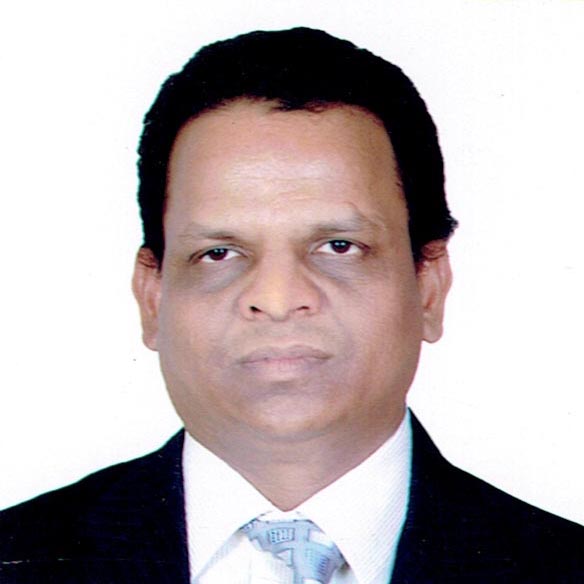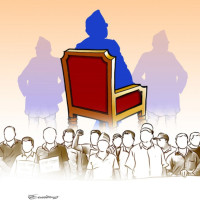Opinion
Inaccessible justice
Persons with disabilities, in addition to facing barriers in enjoying human rights, also face hurdles accessing justice
Dev Datta Joshi
Access to justice is a fundamental human right and has long been a concern for persons with disabilities. As long as persons with disabilities face barriers to participating in the justice system, they will be unable to assume their full responsibilities as members of society. For this reason, it is critical that barriers be removed so that persons with disabilities can enjoy equal opportunities to carry out their duties as witnesses, lawyers, prosecutors, judges, arbitrators, and other participants in the administration of justice. It is also important for persons with disabilities to have the benefit of all the other rights as enshrined in the Convention on the Rights of Persons with Disabilities (CRPD).
The capacity of persons with disabilities to enjoy other human rights can also positively or negatively impact their ability to avail of justice. Accessibility of transportation may determine whether or not a person with disabilities is able to travel to a police station, courthouse, or other place where justice is administered.
Obstacles on the way
A wide range of barriers operate to prevent disabled people from accessing justice on an equal basis with others, including inadequate information or advice, insufficient resources, inaccessible architectural design, inaccessible information or communication methods, and inadequate protection from subsequent victimisation.
The exact nature of the barriers faced by persons with disabilities in accessing justice are likely to differ significantly depending on the type of impairment and on the intersection between disability and other identities. For example, women with intellectual disabilities are extremely vulnerable when it comes to accessing justice. And so are the elderly, children and people from marginalised communities.
Persons with intellectual disabilities in particular may have problems with notions such as time, quantity and space. This may cause problems in court. They may also have problems quantifying, i.e. determining the number of times something took place. If an incident occurred on more than one occasion, the victim may be asked to identify and separate each occasion.
Access to justice was first formally referenced in the formative human rights document, the Universal Declaration of Human Rights (UDHR); although the term “access to justice” was not specifically used to label this right therein. Article 8 states that all have the right to an effective remedy, and this article further expressed the basic right of the individual to a fair trial in both civil and criminal proceedings.
The United Nations Convention for the Elimination of All Forms of Discrimination against Women (CEDAW) recognises that without access to justice there is no remedy for women to address gender based violence.
Guidelines in place
The CRPD enumerates many general obligations that state parties must adhere to. For example, state parties have to enforce these rights, they have to ensure that laws and practices do not discriminate against persons with disabilities, and they have to make sure to change those laws that do so discriminate against persons with disabilities. The CRPD also incorporates the dynamic, intersecting, and over-arching rights of “equality before the law” such as the importance of eliminating stereotypes of persons with disabilities, accessibility, and equal recognition before the law”, and the concept of “access to justice” for persons with disabilities.
Article 13 of CRPD is, in short, an innovative provision in an innovative treaty which, taken as a whole, has the potential to operate as a powerful lever for improving access to justice for disabled people world-wide and for inspiring analogous developments in the context of other marginalised groups.
In the Nepali context, persons with disabilities—especially persons with psycho-social disabilities, intellectual disabilities, the deaf and persons with visual impairment—are incapable of accessing justice on a level equal to their non-disabled peers.
The constitution of Nepal has created space to ensure access to justice for all and the provision has captured the spirit of the CRPD. Currently, Nepal is in the process of state restructuring and new laws and policies are being developed, which is an opportunity to materialise the ‘access to justice’ for persons with disabilities in line with the CRPD. However, the existing laws, policies and judicial institutions—as well as the knowledge, skill, capacity and attitude of persons engaged in the justice mechanism—are unable to mitigate the gap between theory and practice in ensuring access.
Nepal is further committed to achieve the targets of the Sustainable Development Goals (SDGs). Goal 16 sets a target of promoting the rule of law at the national and international levels and ensuring equal access to justice for all.
Thus, persons with disabilities often face numerous barriers to effectively participate in the justice system. This is often the result of the interaction between a particular limitation related to disability and an unresponsive criminal justice process which fails to take into account the impact of disability.
The Convention on the Rights of Persons with Disabilities, which Nepal has ratified, unequivocally calls for improving access to justice for persons with disabilities, including other marginalised groups.
Joshi is a disability rights lawyer




 14.12°C Kathmandu
14.12°C Kathmandu










